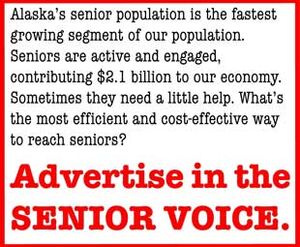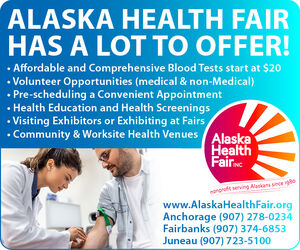Drug Prices: What Can Trump Really Do?
In the fall of 2015, Martin Shkreli, the founder and former chief executive of Turing Pharmaceuticals, ignited a firestorm when his company raised the price of a little-known drug to treat toxoplasmosis to $750 a tablet from $13.50.
Earlier that year, Valeant Pharmaceuticals bought the rights to a pair of life-saving heart drugs, Nitopress and Isuprel. The same day as the purchase, the company jacked up their list prices by 525 percent and 212 percent respectively.
Last year, Mylan, supplier of roughly 95 percent of the nation’s EpiPens, an epinephrine auto-injector used to treat allergy reactions, continued to steadily increase its price, from $57 in 2007 to about $500 today.
Each time sharp drug prices move into the headlines, political candidates complain and pledge to do something about it, Congressional lawmakers conduct hearings and legislation is proposed. But drug prices keep skyrocketing.
In the 2016 presidential race, candidates Donald Trump, Hillary Clinton and Bernie
Sanders all called for action to force drug companies to lower drug prices. Clinton laid out a plan that included creating a government panel that could place limits on drug prices. Trump also called out the industry on the campaign trail, saying he supported the re-importation of drugs from outside the U.S. and that he favored allowing Medicare to negotiate with drug makers on price, something currently prohibited.
Those positions disappeared from the health policy he outlined on his transition website and were replaced by industry-friendly language that included overhauling the Food and Drug Administration (FDA).
Removing the prohibition to let Medicare negotiate drug prices has been opposed by the pharmaceutical industry and leading Republicans, including Rep. Tom Price, R-Ga., whose nomination was recently approved to be Health and Human Services (HHS) Secretary.
At the end of his first week in office, President Trump met with the chief executives of some of the largest pharmaceutical companies in the U.S. to discuss the future of their industry. In a closed door meeting after opening remarks, Trump wooed key drug-making companies and their lobbying group, the powerful Pharmaceutical Research and Manufacturers of America, with promises of speeding up the process of bringing new drugs to market and removing regulations that dissuade companies from making drugs in this country.
Trump said he would “increase competition through bidding wars” to lower prices, but he didn’t publicly elaborate on this idea during his remarks. Trump also questioned policies that enable other countries to, in his words, pay too little for prescription medications. “We are going to be ending global freeload.”
This might seem contradictory given his steadfast support for helping consumers by allowing cheaper prescription drugs to come into the U.S. from Canada.
Trump and his team have several ideas about lowering drug prices. But if allowing the government to negotiate on drug prices would lower cost is anything but clear. Getting legislation passed through the Republican-led Congress is even likely but he faces opposition from House Speaker Paul Ryan, R-Wis., who has long argued that giving Medicare power to negotiate with drug companies is tantamount to government price-setting, which he and others oppose. They also argue it would stifle innovation and research by the drug industry.
While Trump has yet to actively put any muscle behind his verbal support for allowing imports from Canada, some progress has been made already. In the U.S. Senate, there was a vote earlier this month on allowing cheaper drugs in from Canada. It failed 52-46. But it picked up the support of 10 Republicans which means the measure might be able to get Senate approval. But
13 Democrats, many of them beneficiaries of drug industry political contributions, voted against the measure.
Why are drug prices rising?
One thing that has kept drug price increases relatively in check was the introduction of generic drugs into the market over the last 20 years. More than 80 percent of drugs dispensed in the U.S. are generics, which are low-cost alternatives to brand-name drugs. A 2010 IMS study found that generics had saved consumers more than $824 billion over the last decade. But recently, even that hasn’t stopped drug prices from going through the roof.
A study by Optum Rx, a pharmacy benefit management company, found that the average price of the 50 most popular generic drugs increased 373 percent between 2010 and 2014. The primary reason driving up the cost are drug company consolidations. A 2010 study found that the four largest generic drug companies worldwide in terms of sales account for nearly 50 percent of generic prescriptions in the U.S. and nearly 40 percent worldwide. That means they can charge insurance companies more for drugs because there are fewer alternate resources still available.
Allowing Medicare to negotiate drug prices
Trump endorses the idea of giving Medicare the power to negotiate directly with the big drug companies to lower prices, which a Kaiser Family Foundation poll last September found has support of 82 percent of the public – and 86 percent favor requiring drug companies to release information to the public on how they set drug prices. The average person’s drug costs are projected to increase every year by 5.8 percent, almost double the increase from between 2007 and 2013.
In 2015, Medicare spent $324.6 billion on prescription drugs for its 55.3 million beneficiaries – which accounted for 29 percent of national retail pharmaceuticals – according to the Centers for Medicare and Medicaid Services.
Medicare didn’t cover prescription drugs until 2003, when Congress expanded the program to add a drug benefit, known as Part D which went into effect January 1, 2006. But the legislation also included something called the “noninterference clause,” backed strongly by the pharmaceutical industry, which prevented the federal government from negotiating directly with drug makers.
Preventing Medicare from negotiating directly with drug makers is in sharp contrast with what other government agencies can do. Medicaid requires mandatory drug price rebates, and drug manufacturers are not allowed to charge the Veterans Administration more than the lowest price paid by any private sector purchaser. Private HMOs also routinely negotiate discounts from the drug companies. But the Department of Veterans Affairs is also bound by fewer rules than Medicare and one result is that it covers far fewer drugs than Medicare does.
At the time, Republicans framed the issue as a choice between government-run health care and a benefit managed by the private sector. Sen. John Cornyn, R-Texas, now the number two Republican in the U.S. Senate, warned giving Medicare the ability to negotiate drug prices was “a step down the road to a single-payer, government-run health care system.”
After Part D became law, the pharmaceutical and health industries donated $19.3 million to lawmakers, according to the Center for Responsive Politics. Big Pharma, as it’s known in Washington, has considerable clout with lawmakers on Capitol Hill. In the 2016 election cycle, the pharmaceutical/health products industry spent $58.2 million on candidates for federal office, including the presidential race, and both houses of Congress.
Giving Medicare the authority to negotiate drug prices on behalf of 55 million seniors, proponents say, would provide the leverage needed to lower drug costs – particularly on high-priced brand-name drugs which have no competition and where private plans may not be able to negotiate lower prices.
Opponents worry that if Medicare could negotiate prices, the drug companies would reduce their investment in pharmaceutical research and development.
Many health care experts doubt whether repealing the negotiating ban would have much impact. Trump believes otherwise. In a 2016 campaign speech, Trump said, “We are not allowed to negotiate drug prices. Can you believe it? We pay about $300 billion more than we are supposed to, than if we negotiated the price. So there’s $300 billion on day one we solve.”
Wishful thinking or alternative facts? You decide. But the nonpartisan Congressional Budget Office has concluded several times that repealing the ban would result in only modest savings. One study it conducted found that the savings would be negligible.
Even if it is repealed, another provision of the law could shut this down quickly. Medicare is required under the law to cover almost every cancer treatment that is approved by the FDA. Those are listed in six categories or “protected classes” – broad and expensive treatment areas for patients with conditions like cancer, epilepsy, HIV and depression, where the drug plans can almost never say no to the drug companies. This means that if a drug maker comes out with a new cancer medicine with an astronomical price, Medicare is required to cover it and there’s not much it can do to get that price lowered. Trump has not discussed any of those details so far.
One potential middle-ground compromise could be allowing Medicare to negotiate only for specific high-priced specialty drugs. The Obama budgets for 2016 and 2017 included this approach, but that idea went nowhere on Capitol Hill. Things might change in a different climate under the Trump administration. But it remains a question if such a policy could be approved in a Republican-controlled Congress.
Regulating the drug industry
Another option on the table would be to regulate drug prices in the U.S., a practice that has been proved successful in many other countries. But few experts on the drug industry expect the Trump administration to even suggest this option.
Dean Baker, co-founder of the Center for Economic Policy and Research, cites Australia as an example, where drugs are given a value based on the value they give to patients and how many people will need them. Baker told CNN/Money that under this system, a cancer drug might receive a higher rating because it could save your life, while an arthritis drug, which, while it eases pain, is “not a life or death story” – could get a lower score.
But implementing regulations on drug prices is not a practical solution, Baker concedes, because it would be time-consuming and politically challenging – especially going against the vehement opposition of the pharmaceutical industry. The U.S. also does not have a publicly funded universal health care system, or nationalized medicine like Australia, the United Kingdom and other developed countries where government use their clout as huge buyers to negotiate lower prices with drug makers.
Regulating the drug industry also flies in direct contrast to the president’s repeated efforts to curtail government regulation in general. One of his first executive orders signed upon taking office requires the removal of two regulations for every new one introduced.
Another possibility – although so far not raised by the Trump administration – would be to improve the laws that surround patents and the loopholes that allow companies to “evergreen” their drugs – extending the patent life without making substantive changes. But once again, that adds new regulations, something Trump clearly has no interest in doing.
Without the power to limit pricing or more restrictive patent laws, former Obama Health and Human Services Secretary Kathleen Sebelius told Newsweek, she’s unclear how the federal government could have any impact on drug costs. “I’m baffled,” she said. “I have no idea what it is that is intended to actually cause drug prices to go down.”
Trump, in his meeting with pharmaceutical company executives insisted he would force foreign countries to pay more for U.S.-manufactured drugs as another way of lowering prices. In practical terms, increasing foreign prices will have no effect on what Americans pay.
Streamlining the drug approval process
Trump’s idea of “streamlining the process” by which drugs are approved so companies do not have to wait years for new products may help the companies, but it’s unclear if it will have any effect on reducing prices to consumers because companies can set their own prices for a drug. The market price of a drug does not depend on how much money has been put in to research and develop the drug. Just look at brand name drugs versus generics. The manufacturing process is the same, but branded drugs, are, on average, more than 30 times more expensive than generics.
One possible way to streamline the process being considered would speed things up by eliminating Phase II and Phase III of the FDA’s drug approval process. Right now, in Phase I, researchers test a new drug or treatment in a small group of people for the first time to evaluate its safety, determine a safe dosage range and identify side effects. In Phase II, that drug is given to a larger group of people to see if it is effective and to further evaluate its safety. Under Phase III, the drug or treatment is given to large groups to confirm its effectiveness, monitor side effects, compare it to commonly used treatments and collect information that will allow the drug or treatment to be used safely.
Eliminating Phases II and III could mean testing drugs only for safety and not benefit – measuring for effectiveness, and eliminating currently required tests of the medicine’s effects on different populations and larger groups of people. This raises all kinds of safety issues and a heated battle between consumer groups and the drug industry is likely to ensue if that idea moves forward.
Importing drugs from abroad
Another potential solution to fixing rising drug prices would be allowing Americans to import drugs from Canada and other countries. Some lawmakers on Capitol Hill have championed this idea from states bordering Canada and Mexico since the 1980s. That’s because buying the same prescription drugs are considerably less expensive in neighboring countries. As an example, Lantus glargine, a long-lasting form of insulin, costs $300 per bottle in the U.S., while it can be purchased in Canada for $125 including shipping.
Opponents say importing drugs could bring in unsafe drugs that don’t meet U.S. safety standards. The federal government’s policy makes it technically illegal to import drugs from other countries, but the FDA does not object to individuals getting drugs from outside the U.S. under “certain circumstances.”
As a result of large price increases, millions of Americans every year purchase drugs online from foreign pharmacies. The practice was so common in border states like Minnesota, that then Gov. Tim Pawlenty sent state health investigators to Canada to inspect pharmacies in 2004 to give the state’s safety seal of approval to specific Canadian pharmacies. Senior groups regularly take citizens on field trips to Canada from Maine, Vermont and other border states to get their prescription drugs filled and the same happens for folks in Texas, Arizona and California getting less expensive prescriptions filled in Mexico.
Importing drugs from abroad has the strong support of the American public. A September Kaiser Family Foundation poll found 66 percent of Democrats and 70 percent of Republicans thought Americans should be allowed to buy prescription drugs imported from Canada.
Pharmaceutical companies worry that allowing imported drugs into the U.S. could create a flood of unsafe drugs. “It has become very easy for counterfeiters to make bottles and packages look genuine,” the Pharmaceutical Manufacturers Association warns, “but the reality is they are often filled with laced, adulterated or fake pills that are dangerous to patients,” the group argues.
As candidates, both George W. Bush and Barack Obama each supported the idea of allowing import prescription drugs from Canada. Obama even co-sponsored a Senate bill supporting it. But as President, both men changed their mind when they became responsible for the safety of the American consumer.
Safety is a legitimate issue as Mark McClellan found in 2003 as FDA commissioner in the Bush administration. He had the FDA examine mail shipments of imported drugs flowing to U.S. consumers through Miami, New York, San Francisco and Carson, Calif., near Los Angeles. Investigators found that 88 percent of the drugs they examined did not meet FDA standards.
Often the packages contained dangerous counterfeits. Another inspections that year in Buffalo, Dallas, Chicago and Seattle mail facilities and the courier hubs of Memphis and Cincinnati found similar problems.
Also contributing to this story was The New York Times, Newsweek, CNN/Money, Forbes, and the LA Times.


















